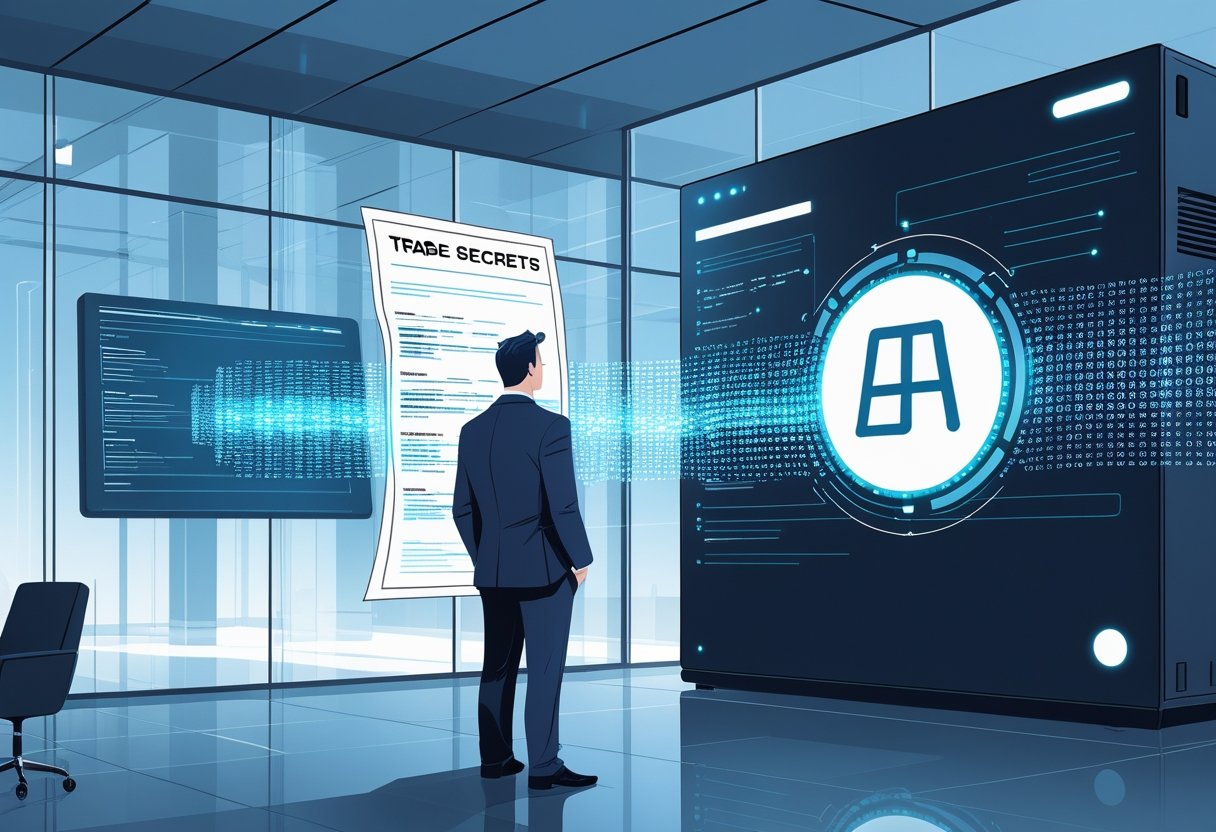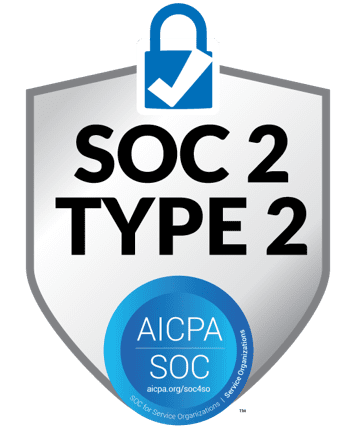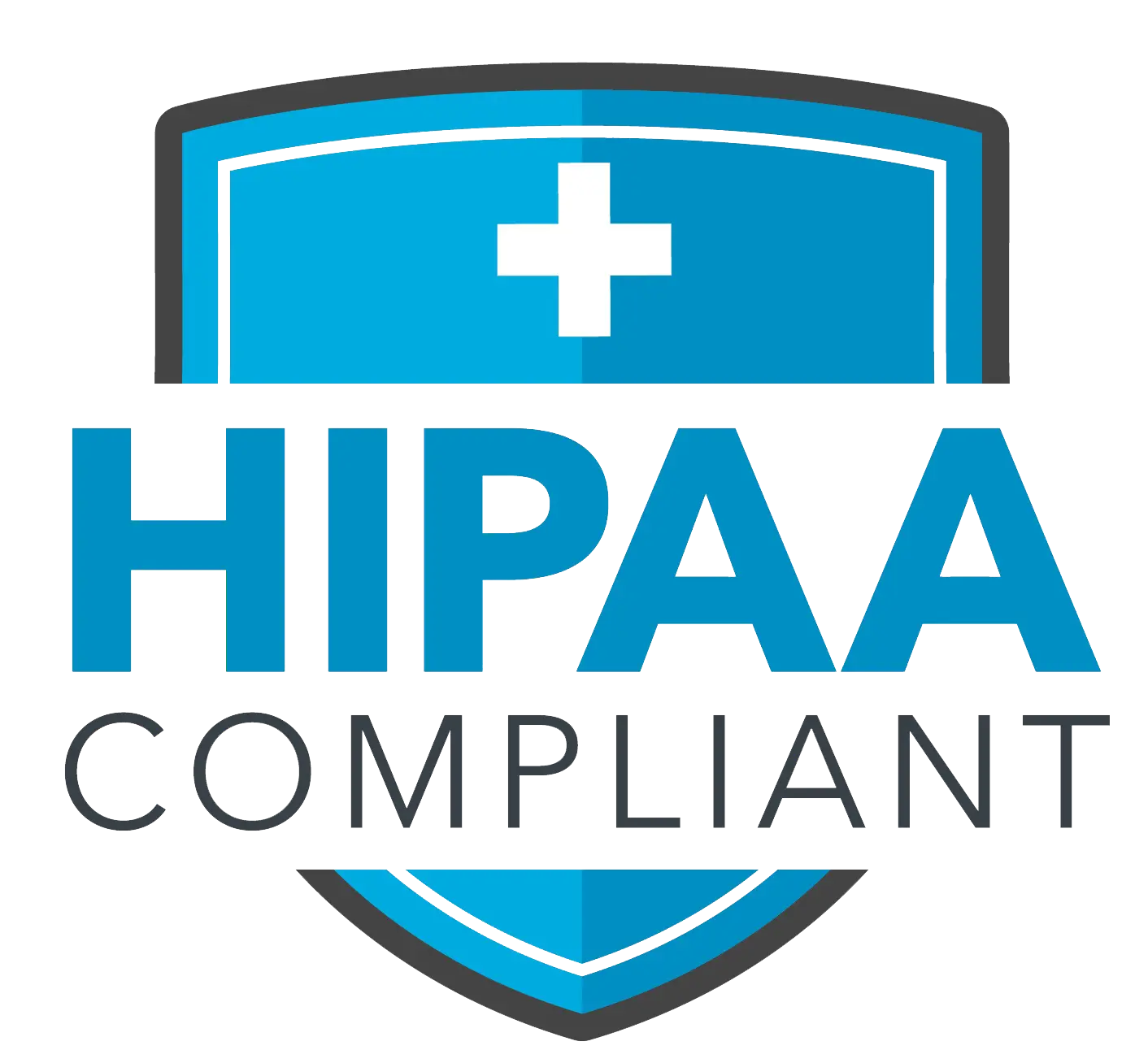Your company’s most valuable secrets may already be feeding AI systems without your knowledge or consent. As artificial intelligence companies scramble to find massive datasets for training their models, they often scrape information from public sources, purchase data from third parties, or receive uploads from users who may not have the right to share proprietary information.

When your trade secrets become part of AI training data, you face immediate risks of losing competitive advantages, violating confidentiality agreements, and exposing sensitive business information to competitors. The traditional boundaries that once protected your confidential information are dissolving as AI systems process vast amounts of data without distinguishing between public information and protected trade secrets.
Understanding how your proprietary information enters AI training sets is crucial for protecting your business interests. You need to know the legal risks involved, recognize new security vulnerabilities, and implement strategies to safeguard your most valuable assets while navigating an increasingly complex regulatory landscape where AI transparency requirements clash with trade secret protection.
How Trade Secrets End Up in AI Training Sets

Your confidential information can enter AI training datasets through multiple pathways, often without your knowledge or consent. AI companies collect data from various sources, creating significant risks for proprietary business information.
Sources of Data Exposure During AI Training
Your trade secrets face exposure through several common channels during the AI training process. Public repositories represent a major risk area where your employees might inadvertently upload confidential code or documents.
Web scraping poses another significant threat. AI companies routinely crawl websites, forums, and online platforms to gather training data.
Your proprietary information posted on company websites, technical forums, or industry publications becomes vulnerable. Third-party data brokers create additional exposure paths.
These companies aggregate information from multiple sources and sell datasets to AI developers. Your customer lists, business processes, or strategic plans might end up in these compilations.
Employee actions contribute substantially to data exposure. When your staff use public AI tools like ChatGPT for work tasks, sensitive data comprises up to 11% of what employees paste into these tools.
Social media platforms and professional networks also leak confidential information. Your employees sharing project details or posting work-related content can inadvertently expose trade secrets to data collection efforts.
The Role of AI Companies in Data Collection
AI companies employ aggressive data collection strategies that often capture your confidential information without explicit permission. Their training datasets require massive amounts of information to function effectively.
Most AI developers do not distinguish between public and proprietary data during collection. They gather information from any accessible source, including leaked databases, public repositories, and scraped websites.
Training algorithms and models themselves can become trade secrets for AI companies. This creates a conflict where your proprietary data becomes part of their protected intellectual property.
Data retention policies vary significantly among AI companies. Some retain input data indefinitely for model improvement, while others claim to delete information after processing.
Your confidential data may persist in their systems longer than expected. Many AI companies operate with minimal transparency about their data sources.
You often cannot determine whether your proprietary information has been incorporated into their training sets or how it might be used in future model outputs.
Types of Trade Secrets at Risk
Your most vulnerable trade secrets fall into specific categories that AI training processes commonly target. Source code and algorithms represent high-value targets, as they directly improve AI model capabilities.
Customer databases and contact lists face significant exposure risks. These datasets contain valuable relationship information that competitors could exploit if incorporated into AI training data.
| Trade Secret Type | Risk Level | Common Exposure Method |
|---|---|---|
| Source Code | High | Public repositories, employee uploads |
| Customer Lists | High | Data broker sales, web scraping |
| Manufacturing Processes | Medium | Technical documentation, patents |
| Marketing Strategies | Medium | Social media, industry reports |
| Financial Models | High | Employee tool usage, data breaches |
Your proprietary methodologies and processes also attract AI companies seeking to enhance their models. Manufacturing techniques, business processes, and operational procedures provide valuable training material.
Financial data and business intelligence represent another high-risk category. Revenue models, pricing strategies, and market analysis data offer competitive insights that AI systems can learn from and potentially reveal.
Research and development information faces particular vulnerability. Your experimental data, failed approaches, and developmental insights provide valuable learning material for AI training while representing significant competitive advantages you need to protect.
Legal Frameworks and Regulatory Risks
Companies face complex legal challenges when their proprietary information becomes part of AI training datasets. Trade secret protection laws must adapt to address AI-specific risks, while patent alternatives become increasingly important as traditional intellectual property frameworks struggle with artificial intelligence technologies.
Trade Secret Law in the Age of Artificial Intelligence
Your trade secrets face unprecedented challenges in the AI era. Traditional legal protections must now address how machine learning models can extract and replicate proprietary information from training data.
AI technologies create new risks for trade secret protection while offering tools for maintaining confidentiality. When your confidential information enters AI training sets, it may lose its protected status through algorithmic exposure.
The core requirements for trade secret protection remain unchanged. Your information must have independent economic value and not be generally known to others.
You must also take reasonable steps to maintain its secrecy. AI companies often struggle to prove their datasets qualify as trade secrets.
Dataset uniqueness and proprietary algorithms become critical factors in establishing protection. Your enforcement options become more complex when dealing with AI-generated outputs.
Courts must determine whether machine learning models constitute misappropriation of your original trade secrets.
Key Legislation: UTSA, DTSA, and International Laws
The Uniform Trade Secrets Act (UTSA) and Defend Trade Secrets Act (DTSA) form the backbone of your legal protection. These statutes govern how your confidential information receives protection against unauthorized use.
DTSA provides federal jurisdiction for trade secret cases involving AI technologies. You can pursue remedies in federal court when your trade secrets cross state lines through digital platforms.
UTSA varies by state but generally requires you to implement reasonable confidentiality measures. Non-disclosure agreements and security protocols become essential for maintaining protection.
International protections create additional complexity. Different countries apply varying standards for trade secret recognition and enforcement in AI contexts.
Key requirements under both frameworks include:
- Economic value from maintaining secrecy
- Reasonable efforts to protect confidentiality
- Not generally known information
- Practical utility in your business operations
Evolving legislation aims to address AI-specific challenges and facilitate cross-border enforcement of your rights.
Patent Challenges Versus Trade Secret Protection
Your intellectual property strategy must weigh patents against trade secrets when protecting AI innovations. Patenting AI technology faces significant obstacles due to abstract idea restrictions.
Patent law struggles with AI algorithms and machine learning processes. Courts often reject AI patent applications as non-patentable abstract concepts rather than concrete inventions.
Trade secrets offer indefinite protection duration compared to patents’ 20-year limit. Your confidential AI processes can remain protected as long as you maintain their secrecy.
Patent advantages include public disclosure requirements that can strengthen your market position. Patents also provide stronger enforcement mechanisms against independent development.
Trade secret benefits include immediate protection without lengthy application processes. You avoid public disclosure requirements that might benefit competitors.
Consider these factors when choosing protection methods:
| Patents | Trade Secrets |
|---|---|
| 20-year protection | Indefinite duration |
| Public disclosure required | Secrecy maintained |
| Strong enforcement | Weaker against reverse engineering |
| High application costs | Lower initial costs |
Your decision depends on the nature of your AI technology and competitive landscape requirements.
Security Vulnerabilities in the AI Era
Companies face unprecedented risks as AI systems create new attack vectors for cybersecurity threats. Remote work environments and cloud-based collaboration tools have expanded the digital attack surface significantly.
Risks from Remote Work and Collaboration Tools
Remote work has fundamentally changed how your employees access and share sensitive information. When your team works from home, they often connect through unsecured Wi-Fi networks that lack proper encryption.
Collaboration platforms like Slack, Teams, and Dropbox create multiple points of vulnerability. Files can be accidentally shared with unauthorized users or stored in personal cloud accounts.
Dispersed collaboration tools increase the risk of data leaks when settings are misconfigured. Your employees may download sensitive documents to personal devices without proper oversight.
USB drives and personal cloud storage become “digital briefcases” that departing employees can easily take with them. Key vulnerabilities include:
- Unsecured home network connections
- Personal device usage for work tasks
- Weak access controls on shared folders
- Limited IT supervision of remote activities
Multi-factor authentication and VPN requirements help reduce these risks. However, weakened supervision and oversight in remote environments make it harder to detect unauthorized access attempts.
Cloud Services and IoT: Attack Surfaces
Your cloud infrastructure creates numerous entry points for potential data breaches. Third-party cloud providers may have different security standards than your internal systems.
API vulnerabilities can expose your data to unauthorized access. IoT devices in your office network often lack proper security updates.
Smart cameras, printers, and sensors can become backdoors for cybercriminals. These devices frequently use default passwords or have weak encryption.
Cloud security risks include:
- Misconfigured storage buckets
- Inadequate encryption protocols
- Shared responsibility gaps with providers
- API key management failures
Your IoT devices multiply these vulnerabilities exponentially. Each connected device represents another potential attack vector that hackers can exploit to reach your core systems.
Container orchestration and microservices architecture add complexity to your security landscape. You must monitor access controls across multiple cloud environments and service layers.
Employee Training and Internal Controls
Your employees represent both your strongest defense and biggest vulnerability against security threats. Without proper cybersecurity training, they may unknowingly expose your trade secrets to AI companies through unsafe practices.
Critical training areas include:
- Phishing recognition – Teaching staff to identify suspicious emails and links
- Password management – Implementing strong, unique passwords across all systems
- Data handling protocols – Proper procedures for sharing and storing sensitive information
- AI tool usage policies – Guidelines for using external AI services safely
Your access controls must follow the principle of least privilege. Employees should only access information necessary for their specific job functions.
Regular access reviews help identify and remove unnecessary permissions. Employee training and internal controls become especially important when staff interact with AI systems.
Many employees don’t realize that prompts and uploads to AI services may be stored and used for training purposes. You need clear policies about which AI tools employees can use for work tasks.
Regular security awareness sessions help reinforce these policies and keep your team updated on emerging threats.
Protecting Trade Secrets Against AI-Related Threats
Companies must implement multiple layers of protection to shield their confidential information from AI systems that could potentially absorb and reproduce proprietary data. Strong legal agreements, robust technical controls, and strict access limitations form the foundation of effective trade secret protection in the AI era.
Confidentiality Agreements and Company Policies
Updated confidentiality agreements must specifically address AI-related risks that traditional contracts never anticipated. Your agreements should explicitly prohibit employees from inputting company data into AI tools like ChatGPT or GitHub Copilot.
Include clear language about what constitutes misuse of AI systems. Ban uploading proprietary code, customer lists, or strategic plans to any external AI platform.
Make violations grounds for immediate termination. Key contract provisions:
- Prohibition on using company data with AI tools
- Definition of AI-related misappropriation
- Specific examples of banned activities
- Clear consequences for violations
Your company policies must cover AI usage scenarios that didn’t exist five years ago. Address remote work situations where employees might casually paste sensitive information into AI assistants for help with tasks.
Train employees to recognize when they’re about to share trade secrets with AI systems. Many workers don’t realize that their prompts become part of training data for some AI models.
Technical Safeguards: Encryption and Data Loss Prevention
Strong encryption protects your data even if AI systems gain unauthorized access to your files. Use AES-256 encryption for stored data and TLS 1.3 for data transmission between systems.
Data loss prevention systems can detect when employees attempt to upload sensitive information to AI platforms. Configure DLP tools to block file transfers containing proprietary formulas, algorithms, or customer data.
Essential technical controls:
| Control Type | Implementation | Purpose |
|---|---|---|
| Encryption | AES-256 for storage | Protects data at rest |
| DLP Software | Real-time monitoring | Blocks unauthorized uploads |
| Network Filtering | Block AI domains | Prevents access to risky sites |
| Endpoint Protection | Monitor file transfers | Detects suspicious activity |
Multi-factor authentication should be mandatory for accessing any system containing trade secrets. Password protection alone cannot stop determined bad actors or prevent accidental data exposure.
Monitor network traffic for unusual data transfers to cloud-based AI services. Set up alerts when large files move to external systems that could contain AI training platforms.
Best Practices for Limiting Data Access
Restrict access to trade secrets based on job requirements rather than organizational hierarchy. Not every executive needs access to your AI algorithms or proprietary datasets.
Use role-based permissions to control who can view, modify, or export sensitive information. Track every access attempt and maintain detailed logs of who accessed what data and when.
Access control hierarchy:
- Level 1: Public information (marketing materials)
- Level 2: Internal use (general business data)
- Level 3: Confidential (strategic plans)
- Level 4: Trade secrets (algorithms, formulas)
Implement the principle of least privilege across all systems. Employees should only access the minimum data needed for their specific tasks.
Regularly audit user permissions and remove access for departed employees immediately. Former employees pose significant risks when their old credentials remain active in company systems.
Create separate networks for your most sensitive trade secrets. Air-gapped systems prevent any possibility of accidental upload to AI training platforms or unauthorized external access.
Mitigating Legal, Economic, and Competitive Impacts
Companies must act swiftly when AI systems use their proprietary information without permission. The financial losses from stolen trade secrets can reach millions, while competitors gain unfair advantages from your algorithms and machine learning models.
Responding to Trade Secret Misappropriation
You need a clear action plan when your proprietary algorithms become part of AI training data. Swift action to secure evidence and enforce your rights can prevent further damage to your business.
Immediate Response Steps:
- Document the misappropriation with screenshots and technical evidence
- Contact legal counsel experienced in trade secret litigation
- Send cease and desist letters to the AI company
- File for injunctive relief to stop unauthorized use
Legal remedies include financial damages and court orders. You can recover lost profits and the cost of developing your proprietary information.
Criminal penalties may apply in severe cases. Federal prosecutors can pursue charges under the Economic Espionage Act when trade secret theft involves significant economic harm.
Economic Value of Proprietary Information
Your trade secrets have actual or potential economic value because competitors cannot easily obtain this information. When AI companies use your data without permission, they capture this value for their own profit.
Financial Impact Assessment:
- Development Costs: Money spent creating algorithms and datasets
- Market Position: Revenue loss from competitors using your innovations
- Licensing Revenue: Potential income from authorized use agreements
- Research Investment: Years of R&D that gave you competitive edges
Machine learning models trained on your proprietary data can replicate your business advantages. This creates direct competition using your own innovations against you.
The economic harm extends beyond immediate losses. Your future market position weakens when competitors access your proprietary algorithms through AI systems.
Maintaining Competitive Advantage Through Innovation
You must protect your proprietary information while continuing to innovate in AI-driven markets. Companies face increased risks as AI tools capture and store data for training their models.
Protection Strategies:
- Implement strict data classification systems for sensitive information
- Use secure AI tools with clear data usage policies
- Monitor employee access to proprietary algorithms and datasets
- Create separate development environments for confidential projects
Your competitive advantage depends on keeping critical information secret. LLMs and other AI systems can inadvertently expose your trade secrets through their outputs.
Focus innovation efforts on areas less vulnerable to AI replication. Develop new proprietary algorithms that build upon your existing competitive strengths.
Consider hybrid approaches that use AI while protecting core trade secrets. You can benefit from AI innovation without exposing your most valuable proprietary information to unauthorized training sets.
Frequently Asked Questions
Understanding how to protect trade secrets from AI training requires navigating complex legal frameworks and practical safeguards. The intersection of intellectual property law and artificial intelligence creates new challenges for businesses seeking to maintain their competitive advantages.
How can companies protect their proprietary data from being used in AI training without infringing on data usage rights?
You need to implement strict access controls and employee confidentiality agreements that clearly define how proprietary information can be handled. These agreements should specifically address AI training scenarios and data sharing restrictions.
Create separate networks for highly sensitive trade secret data. This prevents accidental inclusion in datasets that might be used for AI development.
Use advanced encryption for all proprietary information stored digitally. You should also deploy data loss prevention tools that can detect when sensitive information is being transferred or accessed inappropriately.
Establish clear data classification policies within your organization. Mark confidential information appropriately and train employees to recognize what constitutes protected trade secrets.
Consider implementing blockchain-based systems that create immutable records of who accesses your proprietary data and when. This provides an audit trail if misuse occurs.
What measures are in place to ensure AI companies do not misuse trade secrets for developing their algorithms?
Most protections rely on contractual agreements rather than automated systems. You must negotiate strong non-disclosure agreements before sharing any proprietary information with AI development partners.
AI companies should familiarize themselves with trade secret law to understand their legal obligations. However, enforcement ultimately depends on your vigilance in monitoring how your data is used.
Legal frameworks like the Defend Trade Secrets Act provide remedies for misappropriation. But these laws require you to prove that reasonable efforts were made to maintain secrecy.
Industry best practices include compartmentalizing access to training data and requiring third-party audits of AI development processes. You should insist on these measures when working with external AI companies.
Some organizations use technical measures like differential privacy to add noise to datasets. This allows AI training while making it harder to extract specific proprietary information.
Are there specific legal ramifications for AI companies that use trade secrets without consent?
Yes, unauthorized use of trade secrets can result in significant financial penalties and injunctive relief. The Waymo v. Uber case resulted in a $245 million settlement for trade secret theft involving AI technology.
AI companies face prosecution under the Economic Espionage Act and Uniform Trade Secrets Act. These laws provide both criminal and civil remedies for trade secret misappropriation.
Remedies can include monetary damages equal to the economic harm caused or the defendant’s unjust enrichment. Courts may also award attorney fees in cases involving willful misappropriation.
Injunctive relief can prevent AI companies from using or disclosing stolen trade secrets. However, this remedy becomes less effective as technology rapidly evolves.
International enforcement presents additional challenges. AI development often spans multiple countries with varying intellectual property protections.
What steps should a business take if it suspects its trade secrets have been utilized by an AI company for training purposes?
Document everything immediately. Preserve all communications, contracts, and technical evidence that might demonstrate unauthorized access to your proprietary information.
Conduct a thorough internal audit to identify what specific trade secrets may have been compromised. Create detailed inventories of the affected information and its business value.
Engage legal counsel experienced in trade secret litigation and AI technology. Time is critical because evidence can disappear quickly in digital environments.
Consider hiring digital forensics experts who can trace how your proprietary data moved through various systems. They can help establish a timeline of potential misuse.
Send a cease and desist letter to the suspected AI company. This creates a formal record of your claims and may prompt early settlement discussions.
File a lawsuit under applicable trade secret laws if other measures fail. You may be entitled to emergency injunctive relief to prevent further misuse of your proprietary information.
How do intellectual property laws apply to the use of trade secrets in AI machine learning models?
Trade secrets can protect algorithms, processes, datasets and more in AI development. Unlike patents, you don’t need to register trade secrets or disclose them publicly to maintain protection.
The information must derive economic value from being secret and be subject to reasonable efforts to maintain confidentiality. AI-related trade secrets face unique challenges because they can be reverse-engineered through model outputs.
Machine learning models that incorporate trade secret training data may themselves become protected intellectual property. However, determining ownership becomes complex when multiple parties contribute data.
Cross-border enforcement remains challenging because AI development often involves international teams and cloud infrastructure. Different countries have varying levels of trade secret protection.
Data protection regulations like GDPR can conflict with trade secret law, creating competing compliance requirements for companies developing AI systems.
What are the ethical considerations for AI companies when using externally-sourced datasets that may contain trade secrets?
AI companies have ethical obligations to verify the legitimacy of their training data sources. You should conduct due diligence to ensure datasets don’t contain proprietary information obtained without consent.
Transparency about data sources helps build trust but can conflict with competitive pressures. AI training data disclosures require high-level descriptions rather than detailed trade secrets.
Companies should implement data governance frameworks that identify potentially problematic information before it enters training pipelines. This includes screening for proprietary algorithms or confidential business processes.
Ethical AI development requires respecting intellectual property rights even when legal enforcement may be difficult. This includes honoring the spirit of confidentiality agreements and industry norms.


